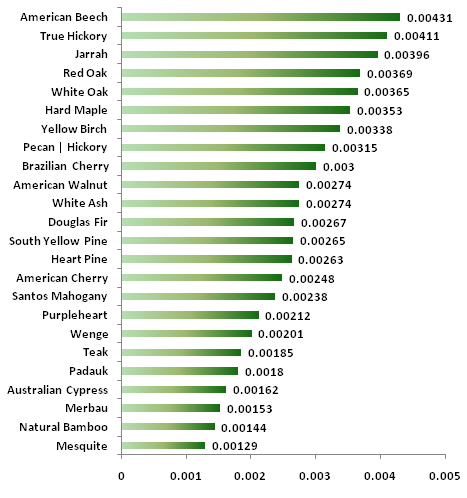Dimentional stability of wood |

Categories
|

Dimensional stability is a coefficient which shows the resistance of the wood to environmental changes such as moisture or temperature. In other words all wood change in sizes (shrink or swell) under certain conditions and the minimal changes (lower number on the scale) indicate higher dimensional stability. This numbers in comparison will give a picture which species more resist to impacts of water. Knowing of this is important when hardwood floor will be installed in the places with potentially higher moisture conditions. Species with higher resistance will suit better in this case. It is not necessarily means that water will not damage them, but resistance to the impact of water will be higher. As we can see very popular red oak not that dimensionally stable as let say American cherry. Bamboo floor was also added to the chart despite of the fact it is not a wood and as we can see it has very high dimensional stability. Also it is important to understand that floor itself after the installation will also react on the moisture differently if compare with separate board or plank. Another factor is that different techniques or types of installation will play a big role on the dimensional stability of floor itself. This chart is for solid wood. Dimensional stability of engineered hardwood floor is higher. That is why engineered hardwood all the time is better option for basements or underground areas with potentially higher moister conditions. Source: Wood as an Engineering Material (Agriculture Handbook 72, Forest Products Laboratory, Forest Service, US Department of Agriculture) |
|





